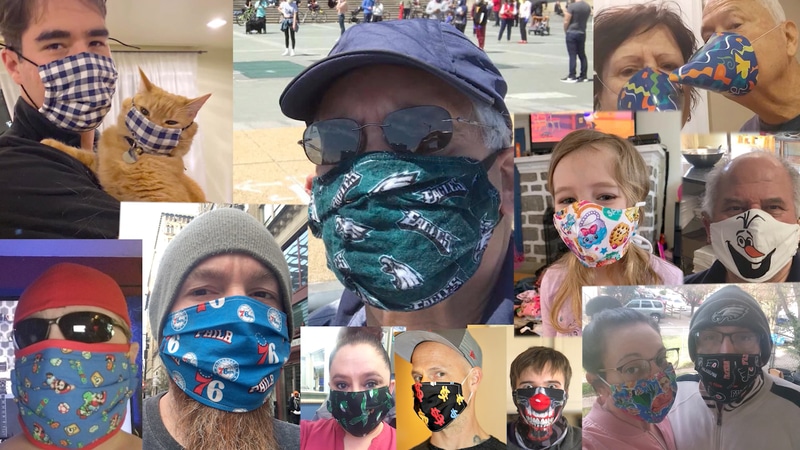
I am writing this article at the end of May 2020. Memorial Day is upon us, California has started to slowly relax the COVID-19 stay-at-home order, along with various other US states. With this relaxing of stay-at-home orders comes more recommendations, and in some cases, laws relating to mask-wearing. Inevitably there are opinions and feelings about this recommendation, and in some cases vocal dissent and protests. Our office is no exception and our staff and doctors have had to justify and defend our policy of universal mask-wearing to prevent the spread of COVID-19. What I have noticed is often the dissenters are not people who have a medical or scientific background and usually claim there is a lack of scientific evidence on mask use. They also object due to personal comfort or political ideology (COVID-19 isn’t real, it’s a conspiracy theory, etc.). This article is only to present the scientific research (freely available to all on PubMed) that supports the recommendation for mask-wearing outside the home in layman’s terms so that everyone can understand how this recommendation came about and hopefully educate our patients and help them to educate those around them. If you believe that COVID-19 is a conspiracy theory, the rest of this article will have no meaning for you.
Since COVID-19 is a brand-new virus there is scarce data that specifically relates to its transmission rate. However, just yesterday the University of Hong Kong department of microbiology released a study specifically relating to COVID-19 and how surgical masks reduced its spread between hamsters. In the first experiment no masks were placed between the cages of infected and healthy hamsters. In the second experiment masks were placed closer to the healthy hamsters’ cage, and in the third masks were placed closer to the infected hamsters. This was meant to represent the difference between healthy uninfected hamsters vs infected hamsters “wearing” the masks. What they found was that after 1 week 66% of the healthy hamsters in the “no mask” group were infected. In the 2nd group (mask worn by healthy hamsters) infection rate dropped to 33%, in the 3rd group (mask worn by infected hamsters) only 16% of healthy hamsters were infected. While far from perfect, it does present compelling evidence that mask wearing, if adopted universally can reduce the spread of COVID-19.
There are some issues with this study, the first being that since it is so new it has yet to be peer-reviewed and published. However, it does come from a reliable source as Dr. Yuen is the microbiologist who discovered SARS. The sample size was small. This means that there were not a lot of hamsters in that study and these results might not pan out in a larger study. This is also not a human study, and some may wonder why that is. In scientific research there are ethical rules and guidelines that were put into place to prevent harm from coming to research participants. This hasn’t always historically been the case, and there are numerous horrific examples of what can happen without adherence to these standards – The Tuskegee Syphilis experiment being one of the most infamous and horrific, several studies out of Nazi Germany also come to mind. Given that we know that COVID can be fatal it is unethical to intentionally infect humans with this virus for research purposes.
However, this is just the newest data on mask-wearing preventing the spread of respiratory illnesses. There were 6 other studies over the past decade that I was able to quickly find on PubMed that I will briefly summarize here. I have included the links so that they can be read in more detail. Basically the research shows that while having healthy people wear surgical masks isn’t a great way to prevent the wearer from contracting a respiratory illness, having someone who is ill (or carrying an illness but currently asymptomatic) wear a mask has consistently been shown to reduce transmission. Does it eliminate transmission? No. But even if it only reduced transmission by 20%, that extrapolates out to a lot of people over the population of the US. Recent research shows that it can reduce transmission by as much as 85%. Given that we know that asymptomatic people do spread COVID-19, this is a very compelling reason to comply with universal mask recommendations. If there was not a surgical mask shortage, no doubt the CDC recommendations would be to wear a surgical mask. However, since there is indeed a shortage, it is my opinion and the opinion of many scientists far more expert than me in this area, that a cloth mask is indeed worth wearing, not necessarily for yourself, but for those around you.
References
- Kwok-yung, Yuen. University of Hong Kong. https://fightcovid19.hku.hk/hku-hamster-research-shows-masks-effective-in-preventing-covid-19-transmission/.
- MacIntyre CR, Cauchemez S, Dwyer DE, et al. Face mask use and control of respiratory virus transmission in households. Emerg Infect Dis. 2009;15(2):233‐241. doi:10.3201/eid1502.081167 https://pubmed.ncbi.nlm.nih.gov/19193267/?from_term=face+mask+respiratory+illness&from_pos=1
- Aiello AE, Murray GF, Perez V, et al. Mask use, hand hygiene, and seasonal influenza-like illness among young adults: a randomized intervention trial. J Infect Dis. 2010;201(4):491‐498. doi:10.1086/650396 https://pubmed.ncbi.nlm.nih.gov/20088690/?from_term=face+mask+respiratory+illness&from_pos=4
- Cowling BJ, Zhou Y, Ip DK, Leung GM, Aiello AE. Face masks to prevent transmission of influenza virus: a systematic review. Epidemiol Infect. 2010;138(4):449‐456. doi:10.1017/S0950268809991658 https://pubmed.ncbi.nlm.nih.gov/20092668/?from_term=face+mask+respiratory+illness&from_pos=5
- Tischendorf JS, Temte JL. Face mask use by patients in primary care. WMJ. 2012;111(1):13‐16. https://pubmed.ncbi.nlm.nih.gov/22533210/?from_term=face+mask+respiratory+illness&from_pos=6
- Leung NHL, Chu DKW, Shiu EYC, et al. Respiratory virus shedding in exhaled breath and efficacy of face masks. Nat Med. 2020;26(5):676‐680. doi:10.1038/s41591-020-0843-2 https://pubmed.ncbi.nlm.nih.gov/32371934/?from_term=face+mask+respiratory+illness&from_pos=8
- Eikenberry SE, Mancuso M, Iboi E, et al. To mask or not to mask: Modeling the potential for face mask use by the general public to curtail the COVID-19 pandemic. Infect Dis Model. 2020;5:293‐308. Published 2020 Apr 21. doi:10.1016/j.idm.2020.04.001 https://pubmed.ncbi.nlm.nih.gov/32355904/?from_term=cloth+face+mask&from_pos=2
